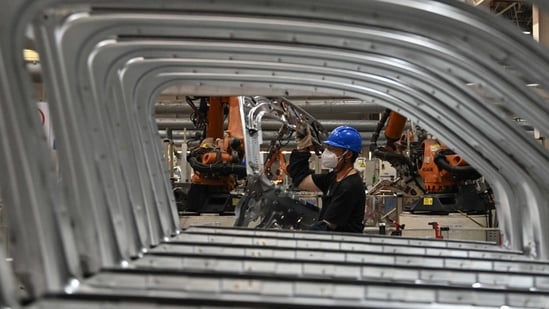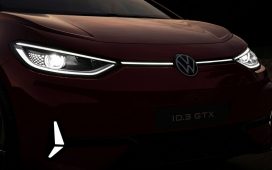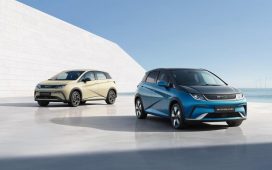Chinese manufacturers sold the fewest electric cars in 18 months to customers across Europe, with registrations falling by nearly half in August from a year earlier.

The 48% drop led to the second straight month of declining share for Chinese brands, based on figures provided by researcher Dataforce. MG, the British nameplate that’s now part of SAIC Motor Corp., lost its top spot across Europe to Chinese rival BYD Co., according to Jato Dynamics, which also tracks the automotive market.
Uncertainty tied to provisional European Union tariffs on Chinese EV imports can partly explain MG’s 65% tumble in August, said Felipe Munoz, a senior analyst at Jato. He said the automaker has been putting more emphasis on the mild-hybrid and plug-in hybrid segments, rather than fully battery-powered cars.
MG has had the most success of any Chinese carmaker in Europe, leveraging its long-held name recognition to rebuild the brand over the past decade, while making a pivot to EVs. But its state-owned parent SAIC has been hit with added EU levies of 38% on its EVs since July, the highest assessment of all.
BYD Co., a Chinese heavyweight that’s a relative newcomer to the European market, continued to make strides in August with a 19% year-over-year rise in registrations, according to Jato.
Automakers are still weighing the potential impact of the EU tariffs, which affect all EVs imported from China, including those from non-Chinese companies BMW, Stellantis and Tesla. The added duties are set to be finalized by November, pending a member state vote, with negotiations between Beijing and Brussels taking place amid furious lobbying.
“There is nothing clear regarding the role of the Chinese EVs in Europe,” Munoz said. “Although there are many plans and announcements, there is even more uncertainty around their future and how Europe will react to the increasing competition.”
Bloomberg News reported on Friday that China’s Chery Automobile Co. has pushed back a goal to start building EVs at a plant it’s taken over in Spain by one year to October 2025, as the company weighs the amount of work to be carried out at the Barcelona site.
A broader slide in EV demand across Europe has added to the uncertainty for carmakers. Registrations fell 5.5% in the first eight months of the year across the region after major markets like Germany removed buyer incentives.
European automakers have called on Brussels to reconsider key climate targets including 2025 fleet-emissions goals that could lead to billions of euros in fines.
Sales trends for EVs imported from China have been uneven in the wake of the tariffs. In the UK and Norway, for example — countries which haven’t followed the EU’s lead — EV registrations rose during August.
Among Western brands, BMW, Mercedes-Benz Group and Renault all saw declines of 50% or more in August registrations across the region, according to Jato. Yet the popular Volvo EX30 helped drive a more than doubling of sales for the Swedish mark’s parent, Zhejiang Geely Holding Group. Tesla Inc., which imports some cars to Europe from China, posted a 7% rise.
Neither Jato nor Dataforce count Volvo among Chinese brands. Polestar, the Swedish EV maker partly owned by Geely founder Li Shufu, isn’t counted among Chinese brands by Jato, though it’s included in Dataforce’s market calculations.
Dataforce’s market figures cover all EU and EFTA countries plus the UK, but exclude Hungary and Slovakia for August, as those markets hadn’t published monthly data at the time the numbers were compiled.







